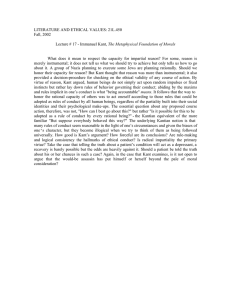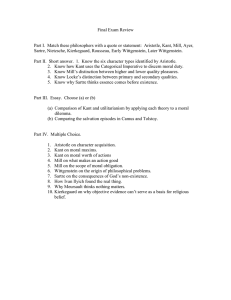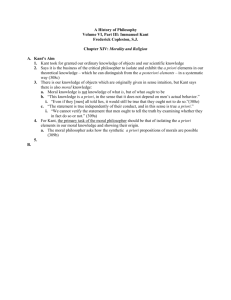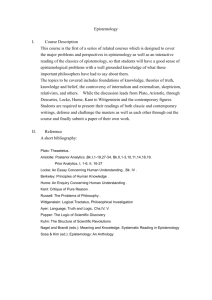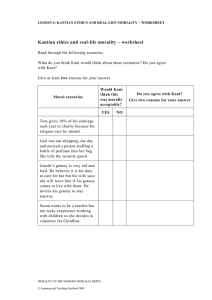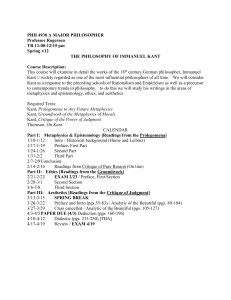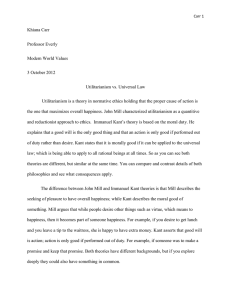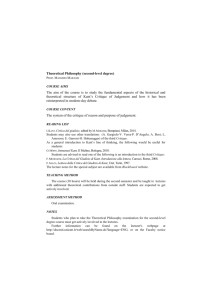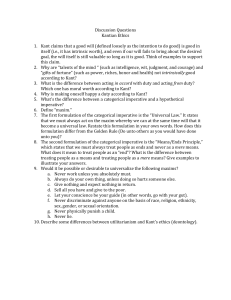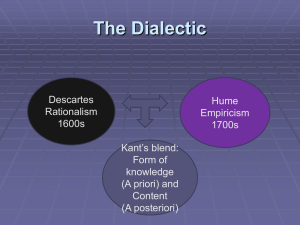Kant & Mill on Mathematics
advertisement
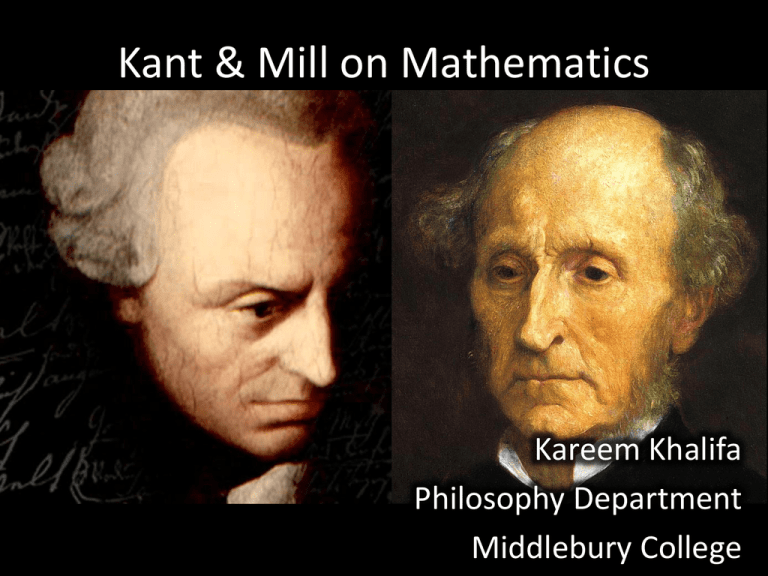
Kant & Mill on Mathematics Kareem Khalifa Philosophy Department Middlebury College Overview 1. Historical background (let’s skip this) 2. Kant 3. Mill 2.1. Kant: Key Concepts 2.1.1. Analytic vs. synthetic statements 2.1.2. Concepts vs. intuitions 2.1.3. The a priori Example of “conceptual analysis” & analytic truths 1. All vixens are foxes. 2. For all x, x is a vixen if and only if x is a female fox. 3. All female foxes are foxes. • For all x, if x is F and x is G, then x is G. 2.2. Kant’s epistemology 2.2.1. How is mathematical knowledge synthetic? Intuition and counting • Enunciation: 7+5 = 12 • Ecthesis/setting-out: ||||||| ||||| • Auxiliary construction – Step 1: |||||||| – Step 2: ||||||||| … – Step 5: |||||||||||| |||| ||| 2.2. Kant’s epistemology, continued 2.2.2. Why is mathematical knowledge a priori? 2.2.3. What are objective structures of space & time? 2.2.4. Why isn’t mathematical knowledge analytic? The rest of Kant’s philosophy of math 2.3. Ontology 2.4. Semantics 2.5. Applicability 3. Mill 3.1. Epistemology 3.2. Ontology 3.3. Semantics 3.4. Applicability
